Fake news. Fake social profiles. Fake photos and videos. Take these free online tests to see if you can spot the fakes, and learn how to detect the internet's attempts to hoodwink you.
It's getting harder and harder to trust anything you see on the internet. It seems like so much of it is full of misinformation. Pictures and videos are manipulated, social media trolls turn out to be bots, the media displays fake news. The onus is now on us, the average person, to learn the motivation behind disinformation, how our brain tricks us, and how to spot fakes.
1. Spot The Troll (Web): Is It a Real Social Profile or a Fake Bot?
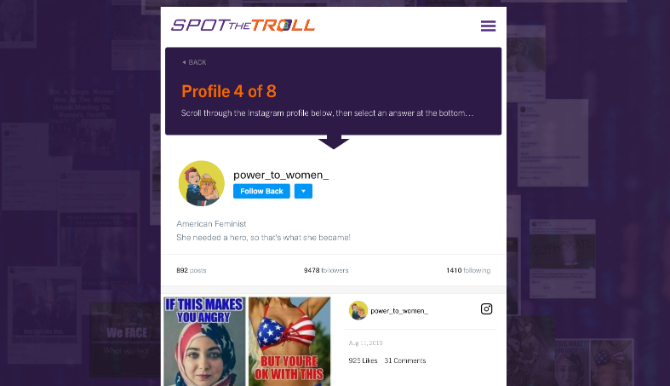
Bots and fake social media accounts are changing how we interact with the internet. Maleficent forces use these tools to push propaganda and false narratives that alter how we think about issues around us. You need to learn how to spot a troll from a real user on the internet.
Spot The Troll is a browser game or quiz that creates eight different profiles. All of these are based on real-world occurrences. For each profile, you'll see their personal details and their last few posts on social media (whether it's Twitter, Facebook, or Instagram). Go through them, look for the signs, and decide if it is an authentic account or a professional troll.
The game is harder than you might think, but that's how clever trolls have become. After you give your answer, Spot The Troll will highlight all the indicators that you make the profile fake or real, so you can monitor for those in the real world.
Once you're done with the game, you should visit the Resources section as well. You'll find organizations fighting fake news and trolls, and must-read articles about disinformation.
2. Bad News (Web): Become a Fake News Media Mogul
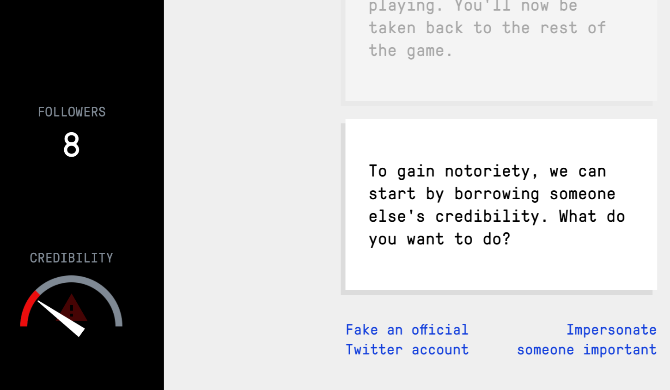
A group of academics, journalists, and media experts banded together to create an online game where you become a fake news media mogul. In Bad News, your objective is to build an online media empire, learning the tricks of how to spread fake news.
You have two meters to track: followers and credibility. You need to strike a balance between gaining followers with your sensational headlines while publishing things that seem credible. Gain as many followers as possible while earning fake credibility.
Through the game, you'll learn about the six tools of fake news media sites: emotion, polarization, impersonation, conspiracy, discredit, trolling. You'll make memes and publish articles that use these six evils of fake news into creating a false narrative online, and learn how they psychologically impact readers. As your followers and credibility rises, challenge your friends to do better.
The game is ideally intended for users between 15 and 35 years of age. There's a Bad News Junior for younger children. You can also optionally participate in an academic survey to see whether you can spot fake news headlines.
3. Scam Spotter and Jigsaw Phishing (Web): Can You Spot the Scam or Phishing Message?
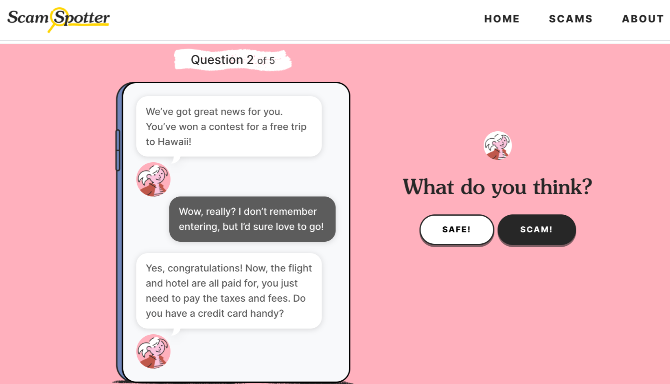
Consumers reported almost $2 billion in scams in 2019 in the USA alone. The online scam and phishing market has evolved from the "Nigerian prince" trick, and you need to keep abreast of these changes. Two sites are here to tell you all about it, and give you a quiz to test how easily you'd fall for a scam.
Scam Spotter focuses on text message scams. Developed by the Cybercrime Support Network and Google, it gives you a five-part quiz to spot phishing attempts through texts. It breaks down common online scams into four types: online shopping, romance, good news, and bad news. For each type, it has three golden rules that you should keep in mind. Once you learn these 12 rules, you'll be ready to spot any sort of scam out there.
Meanwhile, Jigsaw (one of Google's sister companies) has an eight-question quiz to spot email phishing. The quiz will show you how to detect phishing attempts and scams by looking out for things like attachments, email addresses, and grammar. It's one of the best ways to understand digital security and protect your privacy.
4. Spot the Deepfake (Web): Can you Detect the Fake Video or Picture?
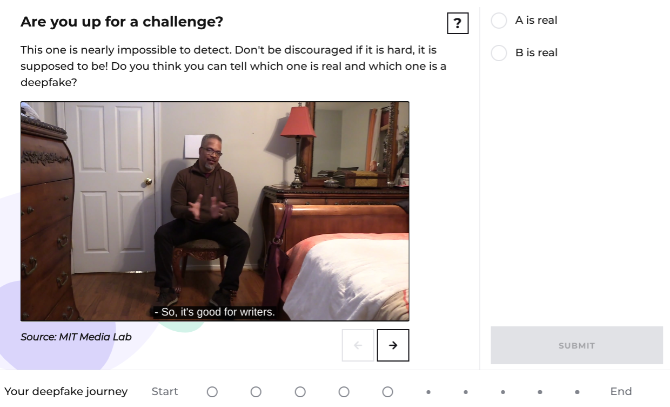
Using artificial intelligence (AU), one can now manipulate videos and images to a scary degree. They're called deepfakes and they look almost real. Since AI can make mind-blowing creations, you need to know the tell-tale signs of a deepfake image or video. These tests will show you how.
Spot the Deepfake is Microsoft's 10-question quiz to educate you about deepfakes and try to detect them. It will point out both the signs in a video to watch out for, as well as the signs within yourself. Factors like motivation, emotional reaction, and others can be great indicators of deepfakes.
MIT's Detect Fakes is another short quiz to compare two videos side-by-side. One is real, the other is fake. Can you figure out which one is the deepfake? MIT offers a hint for each test, and after you answer, educates you about the signs you should look for.
'Which Face Is Real?' shows a real person's photo alongside a picture generated by AI. You have to click on the real one. Try the test, you'll be shocked by how often you are faked out into thinking an AI-created photo is a real person.
5. Clearer Thinking (Web): Cognitive Bias Tests and How Your Mind Tricks You
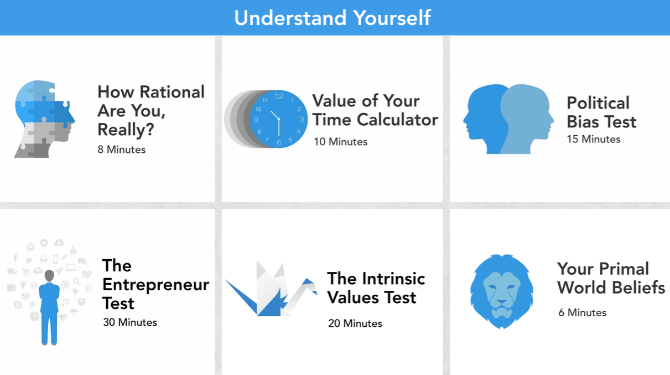
You think someone else is biased, prejudiced, irrational, skeptical, negative, or has some other such pre-existing mindset. You might not be too different. The human mind is fallible to several cognitive biases and logical fallacies. Clearer Thinking will help you test yours, and teach you a bit about how your brain is tricking you.
The main part of the site is the set of quizzes and questionnaires. You can find how rational you are, what your intrinsic values are or your primal beliefs about the world, and other ways to understand yourself. But you can also go beyond that to understand the world, make better decisions, improve your mood, and accomplish your goals.
The last section is especially interesting though, called Recognize Faulty Logic. Since so much of the internet plays host to bad arguments, both well-meaning and in bad faith, you need to be able to spot these. In the information overload we face, you'll become a more informed citizen when you can recognize rhetorical fallacies and detect weak arguments.
The rest of the website at Clearer Thinking is worth browsing too. You'll find videos about how your brain works, a blog full of articles on the human mind, and free resources for teachers.
Free Online Brain Tests for Cognitive Thinking
As you can see, it's easier to spot fake news or trolls online once you develop a habit of critical thinking. Yes, it seems troublesome to question everything you see on the internet, but isn't that better than developing deep, ingrained biases that affect who you are as a person?
In fact, if you become more aware of your own biases and thinking patterns, you'll be able to spot fakes faster. There are some excellent free online brain tests to find your cognitive patterns. Once you realize your own brain's potential, you'll be ready to take on any disinformation.